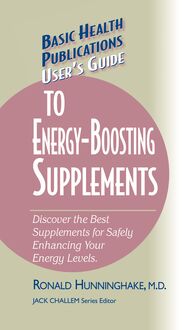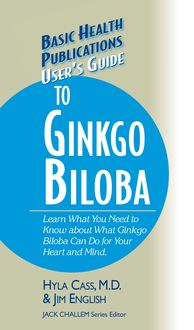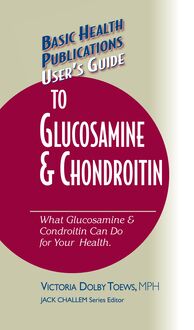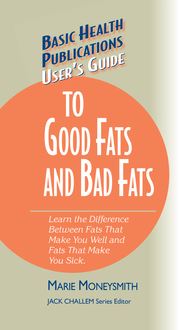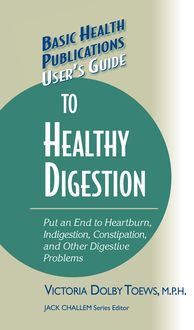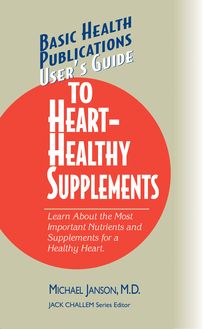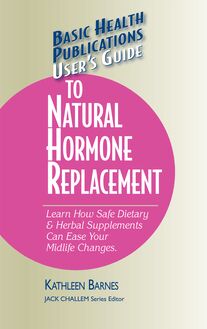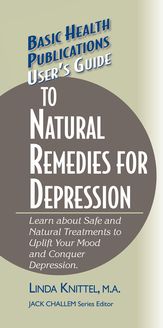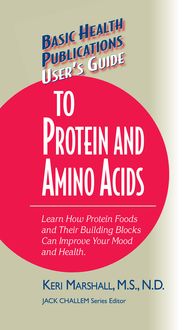-
 Univers
Univers
-
 Ebooks
Ebooks
-
 Livres audio
Livres audio
-
 Presse
Presse
-
 Podcasts
Podcasts
-
 BD
BD
-
 Documents
Documents
-
- Cours
- Révisions
- Ressources pédagogiques
- Sciences de l’éducation
- Manuels scolaires
- Langues
- Travaux de classe
- Annales de BEP
- Etudes supérieures
- Maternelle et primaire
- Fiches de lecture
- Orientation scolaire
- Méthodologie
- Corrigés de devoir
- Annales d’examens et concours
- Annales du bac
- Annales du brevet
- Rapports de stage
La lecture à portée de main
Vous pourrez modifier la taille du texte de cet ouvrage
Découvre YouScribe en t'inscrivant gratuitement
Je m'inscrisUser's Guide to Preventing & Treating Headaches Naturally , livre ebook
Découvre YouScribe en t'inscrivant gratuitement
Je m'inscrisEn savoir plus
Vous pourrez modifier la taille du texte de cet ouvrage
En savoir plus

Description
Sujets
Informations
| Publié par | Turner Publishing Company |
| Date de parution | 01 septembre 2004 |
| Nombre de lectures | 0 |
| EAN13 | 9781591206804 |
| Langue | English |
Informations légales : prix de location à la page 0,0298€. Cette information est donnée uniquement à titre indicatif conformément à la législation en vigueur.
Extrait
The information contained in this book is based upon the research and personal and professional experiences of the author. It is not intended as a substitute for consulting with your physician or other healthcare provider. Any attempt to diagnose and treat an illness should be done under the direction of a healthcare professional.
The publisher does not advocate the use of any particular healthcare protocol but believes the information in this book should be available to the public. The publisher and author are not responsible for any adverse effects or consequences resulting from the use of the suggestions, preparations, or procedures discussed in this book. Should the reader have any questions concerning the appropriateness of any procedures or preparations mentioned, the author and the publisher strongly suggest consulting a professional healthcare advisor.
Series Editor: Jack Challem
Editor: Susan Andrews
Typesetter: Gary A. Rosenberg
Series Cover Designer: Mike Stromberg
Basic Health Publications User’s Guides are published by Basic Health Publications, Inc.
8200 Boulevard East
North Bergen, NJ 07047
1-800-575-8890
Copyright © 2004 by Jonathan M. Berkowitz, M.D.
ISBN: 1-59120-142-X ISBN: 978-1-59120-680-4
All rights reserved. No part of this publication may be reproduced, stored in a retrieval system, or transmitted, in any form or by any means, electronic, mechanical, photocopying, recording, or otherwise, without the prior written consent of the copyright owner.
Printed in the United States of America
10 9 8 7 6 5 4 3 2 1
C ONTENTS
Introduction
1. What Is a Headache?
2. The A-to-Z Guide to Headaches
3. Natural Supplements for Headache Relief
4. Complementary, Alternative, and Traditional Headache Therapies
5. Headache Drugs
Conclusion
Selected References
Other Books and Resources
I NTRODUCTION
R aise your hand if you’ve never had a headache. Well, I guess if you’re reading this book, you probably have had more than your share of headaches. My point, however, is that I’d expect to see very few hands in the air. If misery loves company, people with headaches certainly have plenty of company. Indeed, it is no secret that at least 90 percent of the population experience at least one headache yearly. This book is not for the individual who has one headache a year. Rather, this book is for those unfortunate people whose headaches profoundly affect their lives. This book is for those 40 percent of the population who will tell you that their headaches are severe and debilitating. It’s for those people whose headaches present a weekly or almost daily battle to lead a normal life. Although headaches may substantially disrupt a person’s life, the good news is that for most people, the vast majority of headaches are benign and temporary, and do not portend a more serious disorder.
Perhaps the most important things to understand about headaches are why they occur and what can be done to treat and prevent them: the essential purpose of this book. An even more important purpose of this book is to help you not only to identify and remove potential headache triggers from your life, but also to give you the natural means of successfully treating headaches when they occur.
Chapter 1 is devoted to describing headaches and identifying which symptoms represent the typical headache versus which symptoms demand more serious medical attention. Also included in Chapter 1 are descriptions of how diet and emotions add to the headache equation. In Chapter 2 , you’ll learn about the basic headache syndromes, such as migraine, tension, and cluster headaches. Chapter 3 is devoted to vitamin, mineral, and herbal headache supplements and the studies that support their use, and Chapter 4 describes several alternative headache therapies that have been successfully used, such as exercise, acupuncture, and biofeedback. Finally, Chapter 5 describes the basic pharmacologic management of headache, the treatment of last resort.
CHAPTER 1
W HAT I S A H EADACHE ?
A t its simplest level, a headache represents head pain. We normally think of pain as resulting from an injury to a bodily site; the sensation is then transmitted through nerves to the brain and is perceived as pain. For headache sufferers, this scenario is only true in relatively rare conditions that involve facial nerves like the trigeminal nerve, a major nerve that transmits sensations from the face to the brain. It may surprise many of you to learn that most parts of the brain and head do not feel pain and only the scalp, dural sinuses, and blood vessels can actually perceive pain. The dural sinuses are like large veins in the head that carry blood away from the brain. While researchers are still sorting out where headache pain really comes from, scientists suspect that some headaches originate from deep inside the brain, in a region called the midbrain.
Headache
A generic term that relates to pain anywhere in the head, including the face. There are many types and causes of headache.
Nonetheless, there are only a few structures within the skull that can actually feel pain. As mentioned, some of the head’s arteries and veins can feel pain, and we know that pain occurs when these vessels are distended, inflamed, or pulled on. The same goes for cranial nerves that can transmit pain from the face or send pain signals to the brain when they themselves are injured or inflamed. Another head-pain mechanism originates in the meningies, the tough sheet-like structure that covers the brain. Pain results when the meningies are inflamed or compressed. A classic cause of meningeal irritation is seen in meningitis, an infection of the meningies caused by bacteria.
Meningies
Tough fiberlike covering of the brain that can rarely get infected and inflamed, such as in meningitis.
Obviously, the most common headache symptom is pain. This pain can be localized to a specific area of the head or can be generalized. Although pain may be the most common symptom, many headaches are accompanied by other symptoms, such as fatigue, visual changes, nausea, and vomiting. Indeed, one of the most common types of headaches is the migraine, whose classical symptoms include throbbing head pain, visual disturbances, and nausea with or without vomiting. Although headaches can display a variety of symptoms, different types of headaches often present typical symptoms. I will discuss these headaches and how they present in more detail later. For now, let’s review some of the general diagnostic features of headache.
The course and duration of headache pain can be helpful in diagnosing its cause. For instance, in a common tension headache, the head pain builds gradually over a course of minutes to hours. Migraine pain develops over a period of hours, can last from hours to days, and tends to get better with sleep. Conversely, the pain associated with a ruptured aneurysm often strikes like a lightning bolt. An aneurysm is an abnormally formed and thinned portion of a blood vessel that can rupture without warning. Some people are born with aneurysms while other aneurysms can be caused by disease.
Most commonly, headache location is vague and does not accurately correspond to where the head pain originates. However, in headaches caused by inflammatory disorders, such as arteritis, the patient can very accurately pinpoint the source of his or her pain. Indeed, in arteritis, the pain is normally localized right over the diseased vessel. Sinus or dental pain also produces discomfort in a relatively small area.
Diagnosing Headaches
As you probably know, it does not take a rocket scientist to tell you that you have a headache. It does, however, take some effort and thought to discover what type of headache you have. Perhaps one of the most important clues to the seriousness of a disorder is how long the symptoms have lasted. For instance, someone who walks into my office with their first-ever headache raises more red flags than a person who complains about the same type of head pain for thirty years. In other words, the more recent the symptoms, the more potential for a serious underlying disorder.
When being seen by a physician for headaches, you should expect to provide a complete history and physical, and to receive a neurological exam, of which the physician will take particular note. You may also need a computed tomography (CT scan) or a magnetic resonance imaging (MRI) study of your head to make sure nothing serious is wrong. As some headaches are caused by hypertension, expect to have your blood pressure checked. Also insist that your eyes be checked for glaucoma, an occasional cause of head pain.
When Is a Headache Not a Headache?
Not all headaches are created equal. Although the vast majority of headaches result either from tension or migraine-type head pain, there are several other conditions that can cause headache. The simple viral infection is one of the most common of these conditions. Virtually every person on Earth can attest to the fact that when ill with a cold or flu they have had a headache. These headaches, however, are a temporary annoyance and normally resolve when the illness clears up. Other, more serious medical conditions that are typically accompanied by headache include lupus, infectious mononucleosis, and inflammatory bowel disease. These headaches tend to be recurrent and chronic and are associated with the underlying disease activity. Contrary to popular belief, high blood pressure is a rare cause of headache, and it normally takes very high blood pressure readings to cause head pain. Nevertheless, hypertension is a silent killer of men and women and every person should have their blood pressure checked regularly. Other uncommon causes of headache include drugs, such as birth control pills.
People also get headaches from sinusitis or glaucoma. Facial pain usually originates from structures located in the face or sinus. F
-
 Univers
Univers
-
 Ebooks
Ebooks
-
 Livres audio
Livres audio
-
 Presse
Presse
-
 Podcasts
Podcasts
-
 BD
BD
-
 Documents
Documents
-
Jeunesse
-
Littérature
-
Ressources professionnelles
-
Santé et bien-être
-
Savoirs
-
Education
-
Loisirs et hobbies
-
Art, musique et cinéma
-
Actualité et débat de société
-
Jeunesse
-
Littérature
-
Ressources professionnelles
-
Santé et bien-être
-
Savoirs
-
Education
-
Loisirs et hobbies
-
Art, musique et cinéma
-
Actualité et débat de société
-
Actualités
-
Lifestyle
-
Presse jeunesse
-
Presse professionnelle
-
Pratique
-
Presse sportive
-
Presse internationale
-
Culture & Médias
-
Action et Aventures
-
Science-fiction et Fantasy
-
Société
-
Jeunesse
-
Littérature
-
Ressources professionnelles
-
Santé et bien-être
-
Savoirs
-
Education
-
Loisirs et hobbies
-
Art, musique et cinéma
-
Actualité et débat de société
- Cours
- Révisions
- Ressources pédagogiques
- Sciences de l’éducation
- Manuels scolaires
- Langues
- Travaux de classe
- Annales de BEP
- Etudes supérieures
- Maternelle et primaire
- Fiches de lecture
- Orientation scolaire
- Méthodologie
- Corrigés de devoir
- Annales d’examens et concours
- Annales du bac
- Annales du brevet
- Rapports de stage



